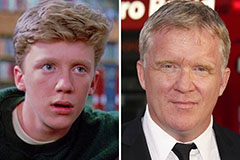Just How to Carry Out Common Sprinkler Repair Work to Maintain Your Watering System
Keeping an effective watering system is necessary for making certain a healthy and balanced landscape, and this starts with carrying out common sprinkler repair services. Problems such as low tide pressure, clogged up nozzles, and busted heads can substantially influence the system's performance. Cleansing or unclogging nozzles and changing malfunctioning heads are fundamental tasks that can improve water distribution. Furthermore, adjusting water stress to the optimal series of 30-50 psi makes certain uniform protection. Seasonal maintenance checks are likewise critical for detecting leaks and adjusting timer setups to seasonal variations. To check out the critical steps and methods for these repair work, let's start by determining .
Identifying Common Lawn Sprinkler Issues
A properly maintained lawn sprinkler system is vital for effective lawn treatment, however also the best systems can run into troubles. One frequent problem is low water stress, which can trigger irregular watering and completely dry patches on your grass.
An additional common concern is lawn sprinkler heads that do not pop up or retract appropriately. This malfunction might be as a result of debris blocking the system or a damaged spring. In addition, misaligned lawn sprinkler heads can lead to water being splashed onto pathways, driveways, or other unexpected areas, leading to water waste and insufficient protection of your yard.
Cleansing and Unclogging Nozzles
When dealing with usual lawn sprinkler problems, addressing blockages is crucial for maintaining ideal system performance. Over time, debris such as dirt, grass clippings, and mineral deposits can build up within the nozzles, blocking water circulation and reducing irrigation effectiveness. To ensure your lawn sprinklers run effectively, normal cleansing and unclogging of nozzles is crucial.
Begin by transforming off the watering system to stop any type of unintentional water discharge. Thoroughly get rid of the nozzle from the sprinkler head. For comprehensive cleaning, saturate the nozzle in a mix of water and vinegar or an industrial cleaning remedy made to dissolve mineral deposits.
Rinse the nozzle under running water to remove any type of remaining particles and reattach it to the lawn sprinkler head. Transform the system back on and observe the water distribution to ensure the clog has actually been removed. Routine upkeep of sprinkler nozzles can substantially improve the longevity and efficiency of your watering system.
Changing Broken Sprinkler Heads
Changing busted sprinkler heads is an important action in maintaining an efficient irrigation system. When a sprinkler head comes to be broken, it can cause water wastefulness and uneven insurance coverage, which can adversely impact the health of your yard or garden. The very first step is to identify the malfunctioning head, generally apparent via uneven water spray patterns or water pooling around the base.
Begin by switching off the water to stop any unnecessary spillage. Use a shovel to very carefully dig around the sprinkler head, guaranteeing you do not damage the surrounding piping. When revealed, unscrew the busted head from the riser, making note of the make and model to ensure you purchase a compatible substitute.
Screw the brand-new lawn sprinkler head onto the riser by hand, guaranteeing it is snug but not overly tight to stay clear of damaging the threads. Turn the water supply back on and examine the new head to guarantee it is operating appropriately, making adjustments as necessary.
Readjusting Water Stress and Coverage
In order to enhance the performance of your irrigation system, readjusting water pressure and protection is crucial. Appropriate water stress ensures that each lawn sprinkler head operates efficiently, dispersing water evenly throughout your grass or yard.
Next, focus on changing sprinkler head insurance coverage to get rid of completely dry areas and overwatered locations. For rotating heads, change useful site the arc and span visit our website setups making use of a screwdriver to change the instructions and range of water circulation.
Make certain overlapping protection between nearby lawn sprinkler heads to avoid missed out on areas. Additionally, look for any obstructions such as plants or frameworks that may block water distribution. By adjusting water pressure and adjust lawn sprinkler head protection, you can keep a rich, healthy landscape while preserving water sources effectively.
Routine Maintenance Advice
Following, inspect for leaks in the irrigation lines. Display the water pressure during procedure; changes can show covert leaks or clogs.
Readjust the system's timer setups according to seasonal water demands. Overwatering or underwatering can damage your landscape and waste resources. Furthermore, evaluate the rainfall sensor and guarantee it is working appropriately to avoid unnecessary watering throughout rains.
Verdict
Routine assessment and prompt repair of automatic sprinkler are crucial for ideal irrigation performance. Attending to common concerns such as reduced water pressure, clogged nozzles, and damaged heads can dramatically this article improve system effectiveness. Cleaning nozzles with a fine needle and vinegar, changing defective heads, and adjusting water pressure to 30-50 psi are crucial steps. Seasonal maintenance checks, including leakage discovery and timer adjustments, additionally enhance water use and make certain the longevity of the irrigation system.
 Alfonso Ribeiro Then & Now!
Alfonso Ribeiro Then & Now! Ariana Richards Then & Now!
Ariana Richards Then & Now! Anthony Michael Hall Then & Now!
Anthony Michael Hall Then & Now! Heath Ledger Then & Now!
Heath Ledger Then & Now! Julia Stiles Then & Now!
Julia Stiles Then & Now!